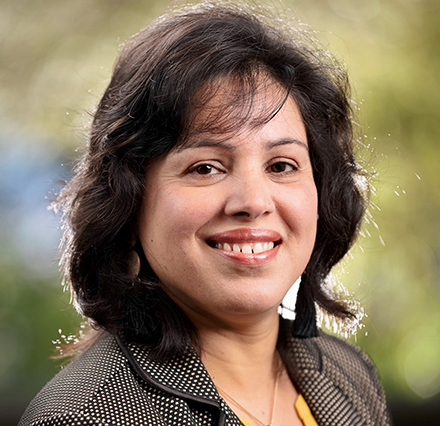The National Centre for Timber Durability and Design Life is entering the next and exciting stage of its evolution, with the appointment of new director, Professor Tripti Singh. Source: Timberbiz
With more than 20 years of experience in managing collaborative, multi-million-dollar research programs, Professor Singh is one of the leading names in wood protection research.
The centre is a Forest and Wood Products Australia (FWPA) and University of the Sunshine Coast (UniSC) supported initiative. It launched in 2016 with the goal of returning Australia to the forefront of international best practice and underpinning consumer confidence in timber product performance.
“We are delighted to welcome such a well-respected and widely recognised name from the international wood science community to the Director role,” said Craig Taylor, FWPA Chair.
“The centre has enjoyed an outstanding launch and evolved to become a valuable resource for the entire industry. We look forward to its continued success and expansion under Tripti’s leadership.”
Over the past six years the centre has made important inroads. It has collaborated with the sector to ensure Australia has access to the world’s leading research while building strong links between industry, academia and customers.
It has overseen critical research projects that have delivered significant value to the sector and helped to educate the next generation of durability scientists, boosting Australian research capacity. Today it is home to 20 associated researchers and students.
“Tripti has a proven ability to innovate, build teams, and develop strong relationships with stakeholders including industry members, funding bodies and academics, making her the perfect fit for this role,” said Professor Ross Young, Deputy Vice-Chancellor (Research and Innovation) at the University of the Sunshine Coast.
“Under Tripti’s expert guidance there is no doubt the centre and its team will continue to expertly fulfil the vital role it has come to play within the industry during the next stage in our collaboration.”
Professor Singh is currently a senior scientist at New Zealand’s Scion, a government-owned company that conducts research to drive innovation and growth from the nation’s forestry, wood products and wood-derived materials. She is also highly familiar with the work of the centre having acted as an international advisory committee member since 2017.
“Taking over the leadership of such a vital centre for research into timber durability is a privilege, particularly during a time where so many opportunities exist for expanding timber use in Australia,” said Professor Singh.
“Industry collaboration on vital research projects will be key to ensuring the ongoing success of the centre. At its core, I believe nurturing relationships with industry and strengthening linkages with research groups in the domestic and global durability community will help align centre research with industry needs and result in practical solutions ready for implementation in real-world settings.
“While there are many opportunities associated with the increased popularity of timber use for construction and infrastructure, durability and susceptibility to decay and degradation present challenges, which the centre is well-placed to help overcome.”
Industry also applauded the centre’s work and the new appointment.
“The centre strives to deliver practical solutions to existing industry challenges and sustains an ongoing focus reflective of the needs of our sector and its future development,” said industry representative Marina Milic, Wood Technologist at AKD, Australia’s largest softwood sawmilling business.
“Under Tripti’s leadership, having access to skilled and applied researchers locally through the centre will continue to offer a greater understanding of wood science and timber properties to industry members throughout Australia.”
In pursuit of a smooth transition, Professor Singh, who starts in mid-August, will be supported into her role by the outgoing director Jeff Morell over the next 18 months as the centre continues to develop.
The appointment of a new director has been part of the vision for the centre since its creation, with the initial director’s role being to establish and grow the centre to the point where it could be successfully handed over to the next generation of research leadership






